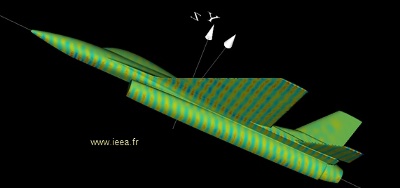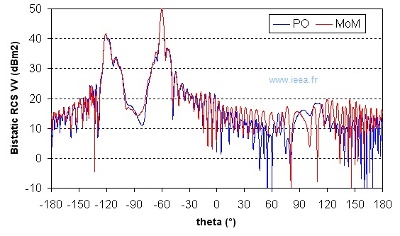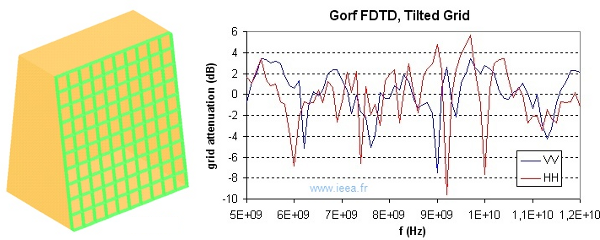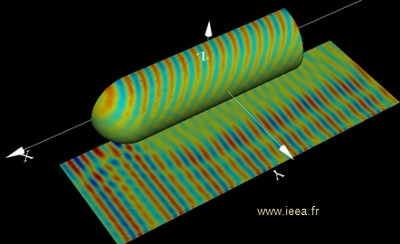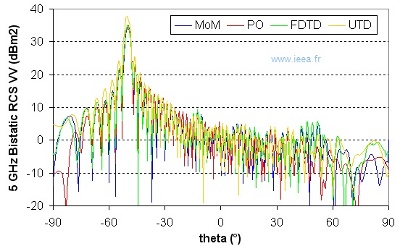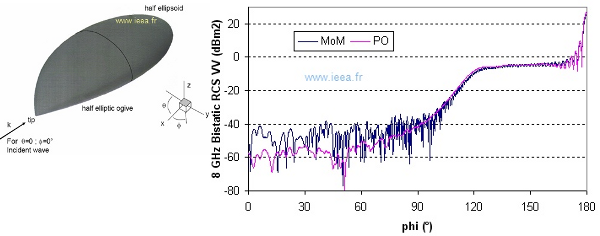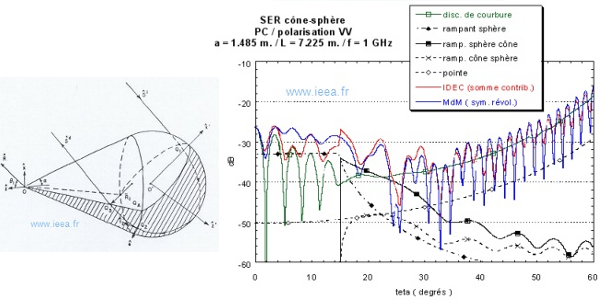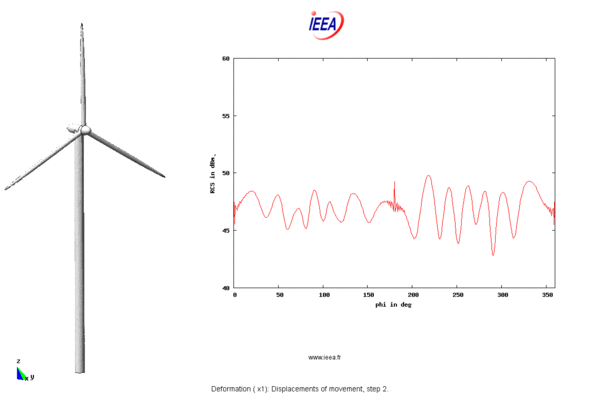IEEA has developed exact (MoM, FDTD) and asymptotic (UTD, PTD) techniques for RCS calculations. For a complex structure the most suitable solution may consist in an hybridization of the different approaches which is also available with the tools that we have developed.
These different techniques are presented on a set of selected examples presenting the different capabilities of the different tools.
Aircraft RCS
MoM (
Icare) and PO (
Zephir) simulation of a F16 aircraft. 60000 unknowns were used for this problem at 1 GHz. The PO calculation time was only a few minutes on a standard PC.
Wide band RCS
The FDTD technique is one of the most efficient techniques for wide band RCS calculations.
Canonical case submitted to the JINA workshop
Four different techniques were used for this case 2 exacts (
MoM and FDTD) and 2 asymptotics (
PO and
UTD). The FDTD calculation was performed with GORF calculation code developed by DGA / CEG.
Nasa Almond
A simple PO technique (
Zephir software) was used in that case. The result is however quite satisfactory at low grazing angles for which this calculation technique might be questionable.
Cone Sphere problem
The asymptotic technique allows identifying the structure elements which contributes to the scattered field. The red curve on figure above is the sum of the different contributions. The blue curve is the MoM result presented for comparison. As a result it is shown that the curvature discontinuity and the tip are the main contributors to the RCS.
Rotating Wind Turbine
Doppler radar are used to determine the wind speed. Unfortunately this radar may be affected by the rotation of wind farm. The
Zephir software, with a POGO method, aims to calculate the electromagnetic power reflected by a wind turbine to the radar, for any position of the rotor, in any direction of observation.
